SUMMARY
This is AI generated summarization, which may have errors. For context, always refer to the full article.

As Southeast Asia remains a battleground between China and the United States, the region is a continuing target of the Asian giant’s media influence, with strategies ranging from press trips to content-sharing, media ownership, and economic incentives.
These are evident in both the Philippines and Cambodia, two countries long marked by United States involvement in their media sectors but whose media environments are under pressure from their governments allied with China.
The Philippines is embroiled in a maritime row with the Asian superpower over the South China Sea, while Cambodia continues to be China’s closest ally and beneficiary in the region.
“Southeast Asia neighbors China, and has large overseas Chinese communities and growing immigration levels from China. Most Southeast Asian societies are distrustful of China. All these factors make Southeast Asia a main target of Chinese influence-building efforts,” said Malcolm Cook, a Southeast Asia analyst with the ISEAS-Yusof Ishak Institute in Singapore.
From 2017 to 2020, Cambodia dropped from 132nd to 144th in Reporters Without Borders’ World Press Freedom Index. The Philippines fell from 127th to 136th during the same years. China ranks 177th out of 180 countries.
Soft power
China is playing catch up with the US in terms of soft power, according to analyst Lucio Pitlo III.
In August 2019, China announced in a China Central Television (CCTV) report the creation of the overall China Media Group (CMG) Asia Africa Language Program Center that aims to raise international public opinion in the two continents. The center has Filipino and Khmer language departments, among others.
“We must stick to localized dissemination, bring the media to foreign audiences, explore more new communication modes…. to make foreign audiences understand China and silently/smoothly communicate China’s position and viewpoints,” the same CCTV report said.
There is a need to “forge a foreign propaganda iron army that will win thousands of miles in the struggle of international public opinion,” it added.
“It is necessary to spread the voice of China. When you [staff] go out, you must also bring back foreign information,” it added.
With the coronavirus pandemic, China continues to double down on its efforts to enhance its public image abroad.
In the Philippines, a traditional US ally, this effort is deemed lacking amid pro-China efforts of President Rodrigo Duterte’s administration, with surveys showing Filipinos still trust the US and Australia over its neighbor.
China has stronger influence in Cambodia, Pitlo said, owing to Phnom Penh’s deep ties with Beijing.
“Western sanctions and Cambodia’s economic vulnerabilities also made it more beholden to Chinese investments, giving Beijing tremendous leverage over Phnom Penh,” Pitlo said.
US vs China: Winning over journalists
Like the US, China conducts training for foreign journalists. But Cook said the difference between the two is that the US’ soft power largely comes from outside the government, while China’s efforts are driven by the communist party-state.
(A co-author of this article was a recipient of the US’ Fulbright-Hubert H Humphrey fellowship and was also part of a Chinese embassy-sponsored reporting trip to Beijing and Xiamen in 2017.)
Contrary to the forced nature of hard power, soft power is the use of “positive attraction and persuasion to achieve foreign policy objectives,” according to Soft Power 30, an index of nations’ soft power rankings.
“Soft power shuns the traditional foreign policy tools of carrot and stick, seeking instead to achieve influence by building networks, communicating compelling narratives, establishing international rules, and drawing on the resources that make a country naturally attractive to the world,” Soft Power 30 added.
In May 2018, according to a report by US-based Freedom House, Filipino media officials and journalists visited China for two weeks to learn about “new media development” and an alternative form of journalism and management called “socialist journalism with Chinese characteristics.”
Rappler learned that at least 3 staff members of the Presidential Communications Operations Office and the state-owned Philippine News Agency, on different occasions, spent nearly a year in China.
Cook said such efforts show that China is trying to build influence in the region.
Cook said Southeast Asia is a “key regional arena in the US-China rivalry and in the Japan-China rivalry,” and China wants to influence media “to counter criticisms of the Chinese government in the local media.”
In July 2017, on the 1st anniversary of the Philippines’ historic South China Sea victory in The Hague, several Filipino journalists were invited to a 10-day Understanding China seminar in several cities, where they met with local party officials.
As recalled by a journalist present, one of the local officers criticized former president Benigno Aquino III, who brought China to international court, and heaped praises on President Duterte.
Participants of the trips acknowledged they have developed a favorable view of China.
Greggy Eugenio, a former PCOO staff, spent 10 “superb” months in China from February to December 2018 for a media exchange program sponsored by the supposed non-governmental organization China Public Diplomacy Association, where he learned about Chinese culture, politics, and the media.

“I don’t see anything wrong in terms of Chinese influence on Philippine media. Western countries have a huge influence on our media, and most of us like them. Why don’t we allow other countries like China to influence us in terms of media knowledge, exchange, and culture? Most of our culture, practices are similar to China’s,” Eugenio told Rappler.
“Our visit to various places made me realize how the culture of Filipinos is close to Chinese. I also commend the leadership of China in alleviating poverty, particularly in the smallest villages,” he added.
Similar trips have been arranged in Cambodia, with one participating journalist, who declined to be named out of concern that his employer would disapprove, saying his two trips in 2017 and 2018 were about writing travel articles about China.
“It was to promote Chinese tourism destinations. The journalists were required to write about these tourism destinations…. so that our Cambodian people can understand about the Chinese tourism sector,” the journalist told VOD News.
“No political messages. It was magnificent,” the journalist added.
Cambodia-China Journalist Association
Phnom Penh has a Cambodia-China Journalist Association (CCJA), which on Facebook, describes itself as “a non-profit organization working for promoting and protecting Cambodia-China journalists and to let them keep their rights of expression in Cambodia.”
CCJA has sent more than 20 Cambodian journalists for training in China since its founding less than two years ago. If not for COVID-19, it would have sent many more, said its president Soy Sopheap.
“We are Cambodia. We have to do the thing that protects our national interest, so we can establish it to defend against bad information disseminated across the Indo-Pacific from the Western world about Cambodia and Cambodia and China’s relations,” Sopheap told VOD News.
Sopheap, who was a long-time journalist at tycoon and prime ministerial adviser Kith Meng’s CTN television station, is also the owner of popular news site Deum Ampil (DAP) and a former shareholder in government-aligned Fresh News, according to VOD’s parent organization’s Media Ownership Monitor Cambodia.
For Sopheap – whose association is funded by a Chinese organization he would not reveal – the work is simply about bringing balance to US-led “attacks.”
The association, supported by the information ministry, wants journalists “to disseminate the truth about what the two countries have achieved and to make people understand what Cambodia and China have done in mutual interest, without [mentioning] debt traps, and human rights violations and others,” he said.
He places regional media at the nexus of US and Chinese geopolitics, a tussle between giants, with ripples felt by local journalists.
Since 2016, the US embassies in Manila and Phnom Penh have sponsored 70 Filipino and 45 Cambodian journalists in exchange programs and trainings.

Heather Fabrikant, press attaché of the US embassy in the Philippines, said they also provided in-country training to government spokespeople and media officers.
“During our exchange and training programs, journalists are free to ask, research, and write without restriction,” Fabrikant said in a statement to Rappler.
“The United States believes in the importance of a free and independent media, both at home and abroad. Professional media training and development are critical components of media freedom and journalist ethics,” she said.
State media ties
China’s aid in the media sector tends to favor state-owned outlets over independent, private agencies, according to a Freedom House report.
This is true in the Philippines, where China has partnered with almost the entire state media network, including People’s Television (PTV-4), Philippine News Agency (PNA), and radio Philippine Broadcasting Station (PBS).
In 2017, a cooperation agreement was signed between PTV and China Global Television Network (CGTN), the global service of China Central Television. PTV-4 then started simulcasting CGTN programs.
PNA reposted a Xinhua opinion piece denouncing the Permanent Court of Arbitration’s decision to side with the Philippines against China.
In 2018, PTV-4 officially launched China TV Theater, a program that airs Chinese entertainment shows, which were then dubbed in Filipino – a move consistent with “localized communication.”

The state-owned China Radio International (CRI) also signed separate agreements with Philippine state media.
A joint radio show between PBS and CRI, Wow China, caught the ire of Filipino internet users in 2020 for alleged pro-China propaganda in topics ranging from culture to business, with subtle hints of politics.
The program, hosted by a Filipino broadcaster and a Chinese anchor, first began airing in 2018, but over time, drew viewers’ complaints that it served as a propaganda tool for the Chinese government.
In November 2018, when the China Telecom-backed telecommunications consortium announced its bid to become the third player, the radio program discussed the poor and expensive internet connection in the Philippines and how the entry of the group would speed it up.
At the height of the pandemic in 2020, some Filipinos also objected to a video posted on online channels of Philippine state-owned media agencies. The video’s title, Iisang Dagat, or One Sea, referenced the South China Sea dispute, while thanking Chinese doctors who came to the country to help.
In both the Philippines and Cambodia, CRI’s broadcasts and online posts used local languages.
In Cambodia, the interior ministry has partnered with the neighboring Guangxi provincial government to set up Nice TV, which promises 24-hour programming on news, education, and culture. The ministry has also signed several bilateral memoranda of understanding (MOUs) with Chinese media outlets such as Xinhua.
China links of privately-owned media in Cambodia
Amid an influx of Chinese residents, the country has also seen a rise in Chinese-language news outlets, such as the Cambodia-China Times, which publishes in both Khmer and Mandarin.
Unlike in Manila, though, where there are no known partnerships between Chinese state media and private media companies, Phnom Penh has several news groups that are known to amplify China’s messaging.
These include the popular website Fresh News, with supposed links to the Hun Sen administration, and DAP News, owned by Sopheap, president of CCJA.
Fresh News’ owner Lim Chea Vutha is an outspoken supporter of China.
Lim, as quoted by Agence France Presse, said: “As a Cambodian citizen, I declare that I support China, I support Chinese investment in Cambodia.”
“If China helps Fresh News, Fresh News is happier.”
Disinformation, internet
Chinese actors have also penetrated local digital spaces.
In September 2020, Facebook took down a Chinese network focusing on the Philippines and Southeast Asia for coordinated inauthentic behavior. The company said it found links to individuals in the Fujian province of China.
The network used fake accounts “to pose as locals in the countries they targeted, post in Groups, amplify their own content, manage Pages, like and comment on other people’s posts particularly about naval activity in the South China Sea, including US Navy ships,” according to the tech company.
Among the network’s frequently discussed topics were: Beijing’s interests in the South China Sea, Hong Kong, content supportive of President Duterte, and criticism of news website Rappler.
Local bureaus of Chinese state-owned media agencies, such as CRI, also have their own accounts on Facebook, the social media platform of choice in both the Philippines and Cambodia.
Chinese outlets operate at least 7 Facebook pages aimed at Cambodian audiences and at least one targeting Filipinos.
Cambodia also recently established a China-style internet gateway that would allow all online traffic to be controlled and monitored, with human rights groups saying it would be a new tool to repress any opposition.
‘Which one is closer?’
Information ministry official Phos Sovann said Cambodian and Chinese ministries of information work together “in fighting against fake news, and supporting each other in producing content, exchanging culture, agricultural broadcasts and more.”
But he denied accusations of a Chinese bias. Cambodia is too small to be picking sides between the US and China, he said.
“We are the children, and when the parents fight, we find it difficult to take sides,” Sovann said. “In fact, we love both father and mother, but we have to think: Between the two, which one is closer and thinking about us more? This is the key decision for us.”
In the Philippines, state-owned China Telecom and partners have won a bid to become the country’s third telecommunications provider.
The group, DITO Telecom, has been allowed to construct cell towers in Philippine military bases – a decision that Cook described as “very odd.”
“This should limit what traditional security partners of the Philippines – the USA, Japan, Australia, are willing to do with their Philippine counterparts on affected Philippine bases,” Cook said.
In its 2020 report, the International Federation of Journalists warned that control of infrastructure could be a first step toward controlling content, signaling the interplay between geopolitics and media.
“Through foreign media acquisitions and large-scale telecommunications ventures, China is increasing its share in critical information infrastructure overseas. In this way, Beijing is moving to build control over the messaging infrastructure,” it said.
But for Sopheap, CCJA president, nothing that’s happening with China is any different from what Western states have been doing for years, and he bristles when pressed about his funding sources.
“Why don’t you ask NGOs where they get their money from, too?” – Rappler.com
This story, a collaboration between Rappler and Cambodia’s VOD News, was published with support from the Sasakawa Peace Foundation.
Add a comment
How does this make you feel?
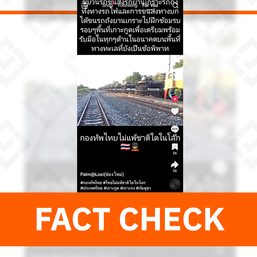
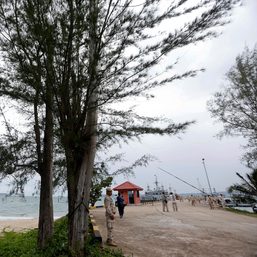
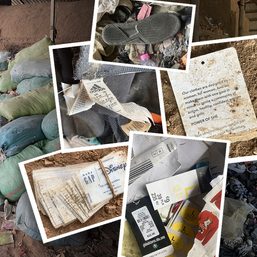
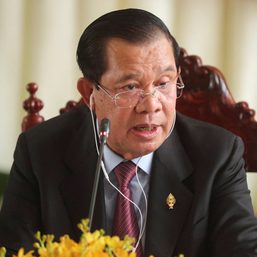
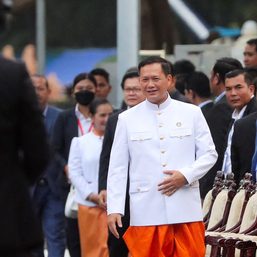




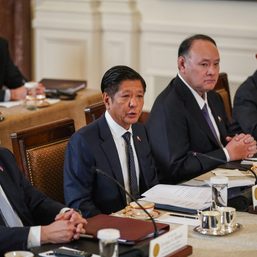

![[Newsstand] The media is not the press](https://www.rappler.com/tachyon/2024/04/tl-media-is-not-the-press-04132024.jpg?resize=257%2C257&crop=281px%2C0px%2C720px%2C720px)


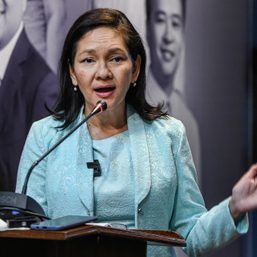
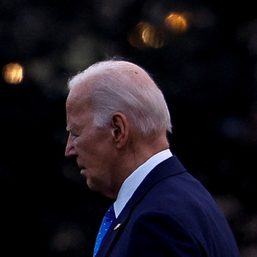

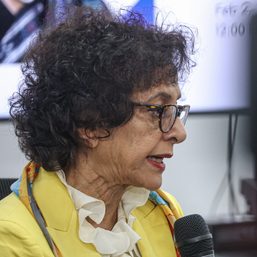
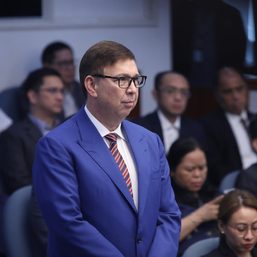
There are no comments yet. Add your comment to start the conversation.